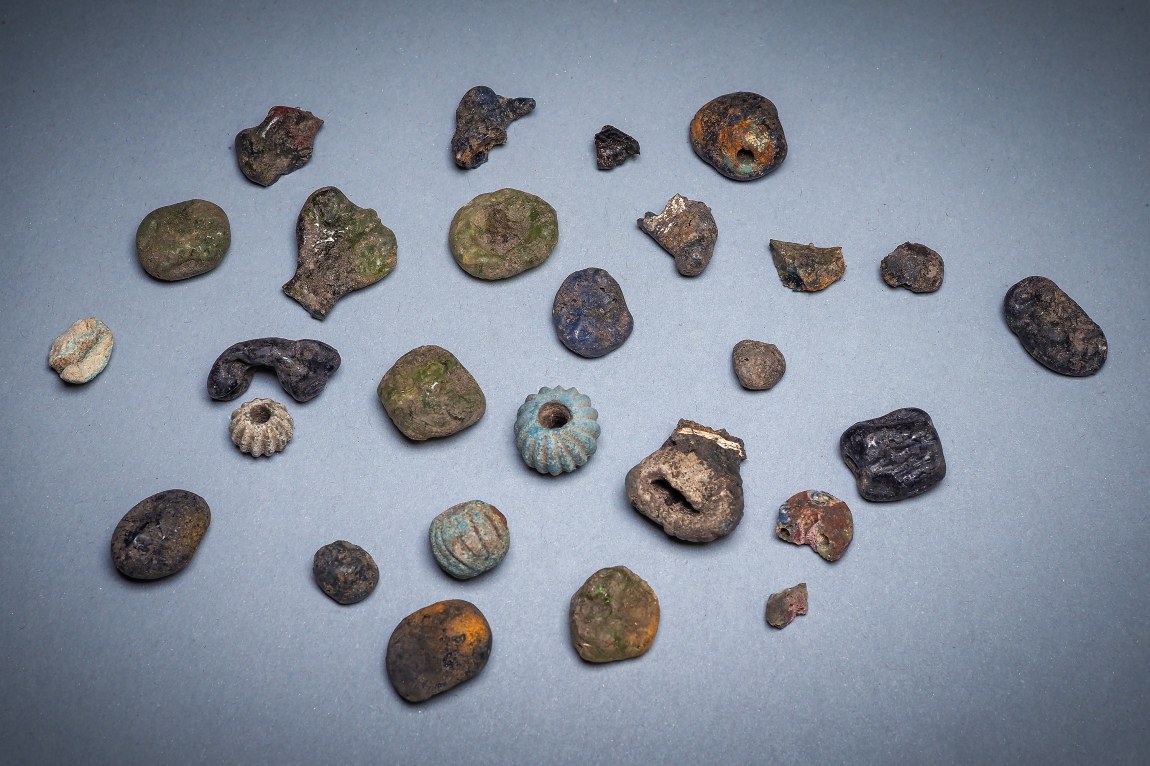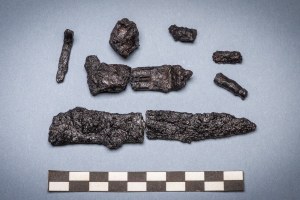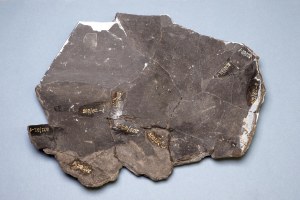Cremation Grave from the Roman Period – Mariánské Radčice
› Detail › Cremation Grave from the Roman Period – Mariánské RadčiceIn 1982, J. Sýkorová, an employee of the District Museum in Most, discovered disturbed cremation graves near Mariánské Radčice. The subsequent research, led by T. Velímský, was conducted by the then Most branch of the Archaeological Institute of the Academy of Sciences of the Czechoslovak Republic. A total of 16 cremation graves were uncovered over an area of 40 x 50 meters. The graves had likely been disturbed earlier by deep plowing, but primarily by the removal of topsoil. As a result, most of the urns were destroyed, and only those parts of the graves that extended into the subsoil were preserved. All graves contained an urn (a ceramic vessel for storing the cremated remains of the deceased), but it cannot be ruled out that, given the terrain situation, some burials without an urn were not discovered. Based on the analysis of the finds (ceramics, weapons, buckles…), the burial site can be dated to the later phase of the early Roman period, specifically to the 2nd century AD. In two graves, imports from the Roman Empire were also found – a fragment of a bronze vessel in grave no. 1 and glass beads in grave no. 10.
Grave No. 10
In the round pit lay shards of a ceramic vessel, burnt bones, fragments of iron and bone objects, and beads. Only the bottom of the urn could be reconstructed. The grave goods include a fragment of an unspecified iron buckle, a broken iron knife, and several other indeterminate iron fragments. A piece of a bone comb has also been preserved, but unfortunately, the exact type cannot be determined, and a fragment of the head of a bone pin. The most striking at first glance are the ingots of glass beads. The best-preserved pieces, vertically ribbed turquoise blue, known as melon-shaped, are not glass but are made of faience. Both glass and faience beads entered the barbarian environment from the Roman Empire, with faience likely produced in Egypt.
Based on the grave goods, it can be assumed that this is a woman's grave. In our environment, a larger number of beads appears only in female graves, while the comb can be found in both female and male graves. The results of the anthropological analysis of the skeletal remains from this burial site are not known.
Literature:
Koutecký, D. 1995: Roman Period Burial Site in Mariánské Radčice, District of Most. In: J. Blažek – P. Meduna (eds.): Archaeological Research in Northwest Bohemia from 1983–1992. Most, 179–186.
Kacl, P. 2014: Finds of Faience Objects from the Roman Period in Bohemia, Praehistorica XXXII/2, 125–142.
Text and photo:
Mgr. et Mgr. Petr Vágner
Archaeologist
 en
en cs
cs de
de

